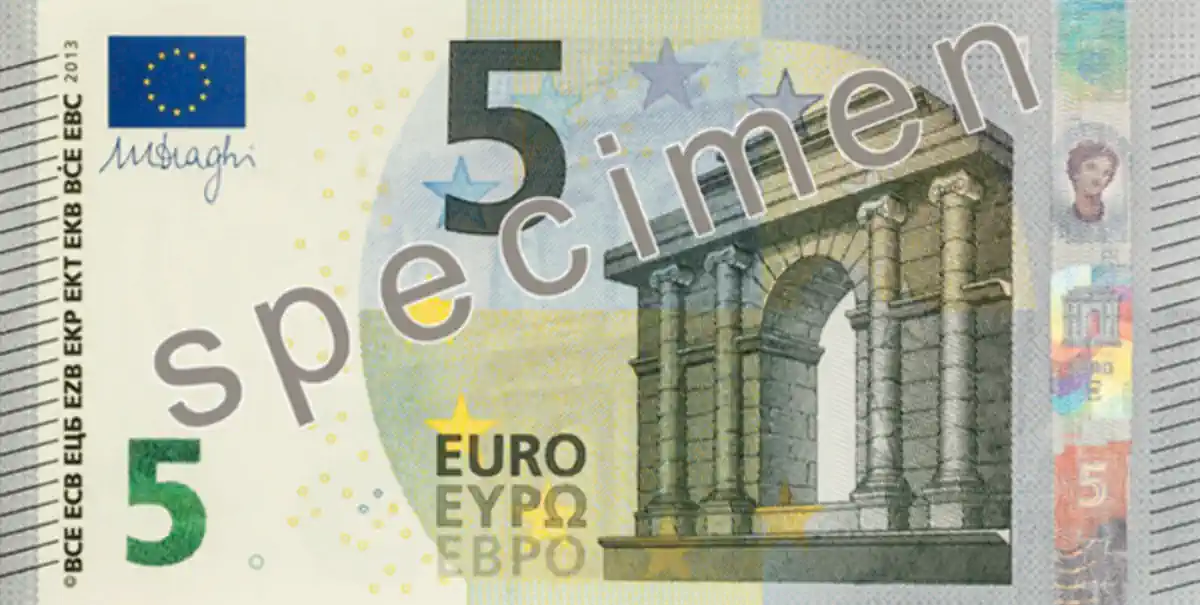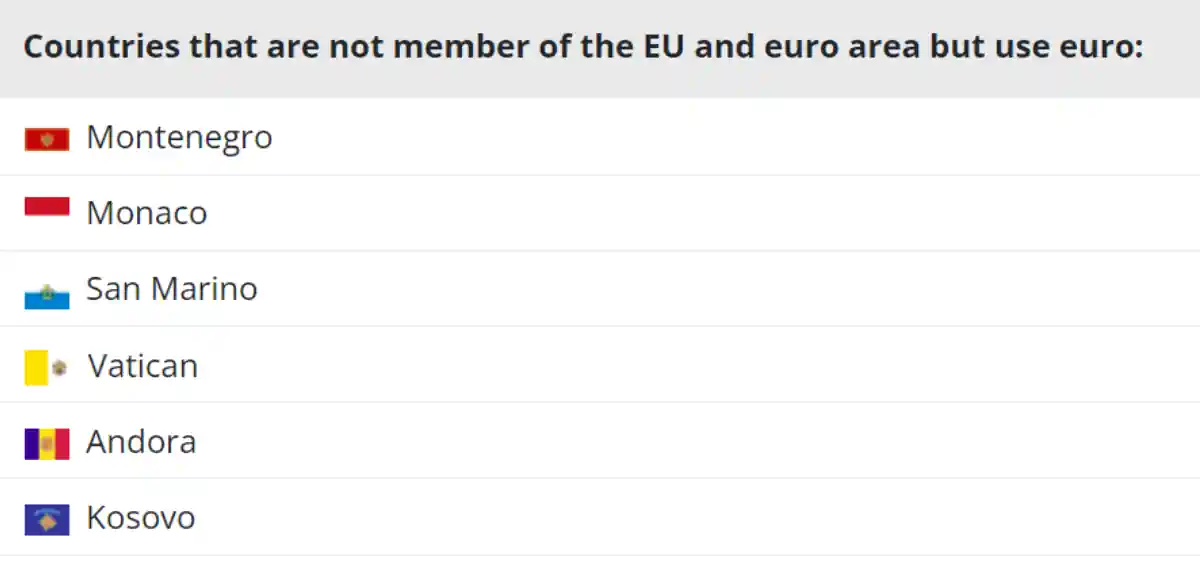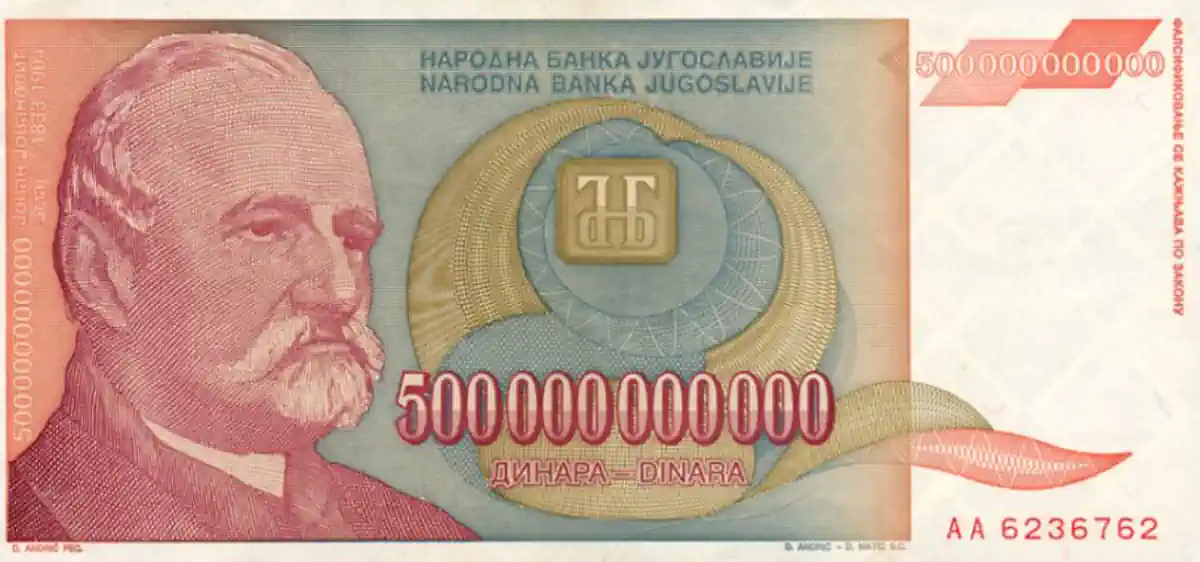Adriacom I Business Services & Immigration
Montenegro Awaits - Let's Make it Yours.
Montenegro Currency Guide [+ Calculator]
Montenegro’s currency is the EURO. Montenegro while neither being a part of the European Union nor the Eurozone, has unilaterally adopted the Euro as its defacto official currency since 2002.

Table of Contents
Togglesource: ECB
The following Euro banknotes are in circulation: 5€, 10€, 20€, 50€, 100€, 200€ and 500€.
Euro coins come in the following denominations: 1, 2, 5, 10, 20, and 50 cents, 1€, and 2€.
Exchanging Currency in Montenegro
You can exchange currency in Montenegro in local bank branches. There are very few currency exchange offices and it is not possible to exchange a wide array of currencies. Most banks can only handle the major forex pairs along with other currencies of the Western Balkans such as the Serbian Dinar or Bosnian Mark.
You should be able to exchange the currencies below but it’s no guarantee.

Banks in Montenegro are also slow – sort of. That means that you can expect to wait up to one hour and won’t get the best exchange rates either. A better alternative would be to exchange money in your home country, possibly at better rates, or to withdraw from local ATMs with your credit or debit card.
Montenegro Currency Calculator
Please see below our Montenegro currency calculator. Choose any currency and the amount you want to exchange and it will automatically be calculated in your home currency.
Withdrawing money from ATMs in Montenegro
Withdrawing from an ATM incurs currency conversion fees if the denominated currency of your account is not in Euros and a withdrawal fee of about 5,00€ per withdrawal. There are limits on how much you can withdraw per day; it is mostly 500€ per bank.
Note: Be also sure to notify your home bank that you plan to withdraw money from a foreign ATM. Some banks do not allow foreign cash withdrawals without prior approval.
In most places, you should be able to pay with credit or debit cards. Smaller, family-run restaurants, coffee shops, and souvenir shops often do not accept cards. And sometimes the payment terminal does not work, better always carry at least some cash with you for emergencies.
If you have a bank account in Montenegro denominated in Euros, you would be able to withdraw and deposit money without charges and paying high exchange rates. You could use a service such as Wise to transfer money to your local Montenegrin bank account and spend money at the real exchange rate.
Info: You need to have a residence permit or real estate in Montenegro before you can open a bank account.

source: CBCG
Montenegro’s Euro Adoption
Unlike other countries such as San Marino and Monaco who are granted the rights to mint limited quantities of Euro coins with their design (but not to issue euro banknotes), Montenegro has not concluded any monetary agreements with the European Central Bank and European Commission and thus mints no own coins.
Since its independence in 2006, Montenegro had no own currency and thus no monetary policy to work with. While this might be a good thing in some ways, it has some downsides as well. By rejecting monetary policy, Montenegro can not react to crises and external shocks by just increasing the money supply.
Since Montenegro’s Central Bank cannot control its money supply, there can be times when there are too few banknotes and coins in circulation. This leads to a tendency of bartering which is common in Montenegro between business entities and individuals.
For example, a real estate investor might not be liquid enough to pay his contractors in cash. Instead, he barters for construction work and supplies with his finished products (apartments). The contractor barters for a car and cash with his previously bartered apartment.
On the positive side, the Euro makes it easier, cheaper, safer, and more predictable for foreign investors to do business in Montenegro which widely fosters economic stability and growth. Inflation is lower than it would be using an alternative Montenegrin currency.
Is Montenegro in the Euro Zone?
Montenegro is not part of the Euro Area (Eurozone) as of 2023. Joining the Eurozone will take a couple of years. Montenegro needs to join the European Union first. However, there are a couple of unprecedented problems the European Institutions have to deal with.
Montenegro is not bound by convergence criteria.
For the European Central Bank (ECB), the lack of convergence criteria is an issue. The ECB has the stance that unilateral ‘euroization’ is in direct conflict with Maastricht Treaty measures. The criteria are a set of economic indicators that European Union member states must adhere to before joining and must continue to respect thereafter.
One such criterium is participation in the ERM II (Exchange Rate Mechanism) for at least 2 years. The ERM II ensures economic stability in the EU by limiting exchange rate fluctuations. It is also a precursor for Non-Eurozone countries to enter the euro area.
Nevertheless, it is widely expected that Montenegro’s EU membership will not be obstructed and that the EU will let Montenegro keep using the Euro until its accession.
Why is Euro used in Montenegro?
Montenegro was once part of the Socialist Federal Republic of Yugoslavia and used the Yugoslav Dinar as the national currency. Yugoslavia went through a period of terrible economic decline following the Yugoslav Civil War in the early nineties of the 20th century.
Even in the period before the civil war, inflation rates were several thousand percent but increased to hyperinflationary levels very soon. The Dinar became worthless between 1992 and 1994. The annual inflation rate in January 1994 reached 116,545,906,563,330 % (116.546 trillion percent, or 1.16 × 1014 percent). The inflationary years are also known as the “times of the world’s poorest billionaires”.

source: Wikipedia
Given this background of extreme economic hardship and monetary instability, it is understandable that once the war ended in 1995, one of the main priorities of the Central Bank was to guarantee price stability.
One could say that in the lack of a better alternative in reminiscence of the terrible hyperinflationary period, the government and the population of Montenegro considered it wise to ‘borrow’ the Euro.
When did Montenegro change to Euro?
In March 2002, Montenegro unilaterally adopted the Euro as the sole legal tender. Before that, in November 1999, the Central Bank of Montenegro introduced a dual currency system in which both the Deutsche Mark and the Dinar were used in parallel. As of January 2001, the Dinar was abolished and the German Mark became the sole legal tender in Montenegro.
Montenegro currency to USD
The exchange rate for the Montenegrin currency to USD is the same as the EUR/USD rate. Montenegro uses Euros. You can exchange money at all local banks in Montenegro or withdraw money from a local ATM to receive Euros.
Euro to Montenegro currency
Montenegro uses the Euro as its official currency. You do not need to exchange any currency if you hold Euros, you can use them to buy goods and services throughout Montenegro.